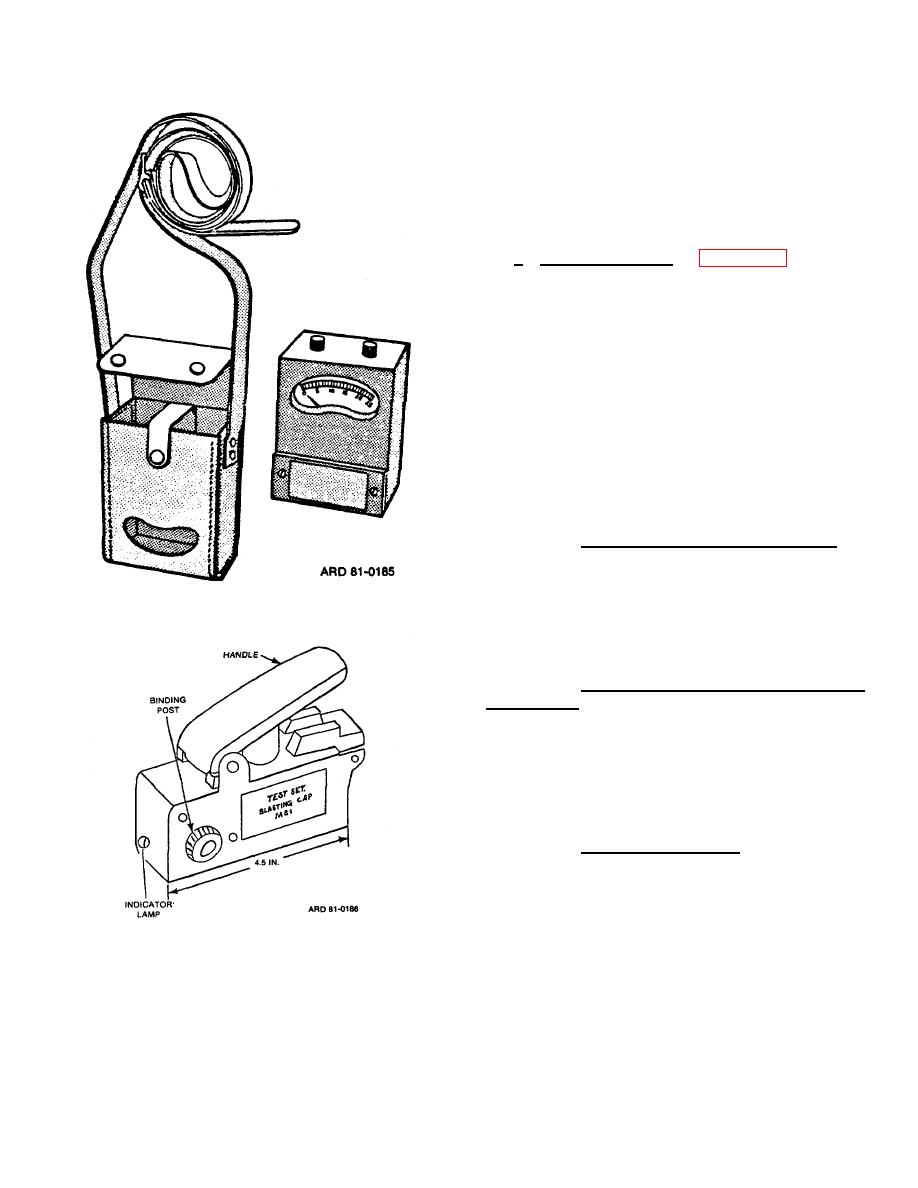 |
|||
|
|
|||
|
Page Title:
Figure 4-18. Blasting galvanometer |
|
||
| ||||||||||
|
|
 TM 9-1300-277
to activate the generator, and two binding posts for
attachment of firing leads. The test set is waterproof
and may be used at temperatures as low as -400 .
F
Continuity testing is accomplished by connecting the
firing circuit to the test set binding posts and then
depressing the handle sharply. If there is a cont 1uous
(intact) circuit (even one created by a short), the
indicator lamp will flash.
b. Blasting Machines (fig.
Blasting
machines are used to provide the electric impulse
needed in electrical detonations. There are six models
which derive their power directly from a shunt-: wound
generator and two models, the M32 and M34 which
derives their power from an alternator and use a
capacitor discharge output circuit. The term used in
many NATO countries for "blasting machine" is
"exploder" or "dynamo exploder." The generator type
machines are all actuated by means of a gear-driven
armature. The 10-cap machines have metal cases and
twist-type drive handles. The higher capacity (30, 50,
and 100 cap) machines have varnished or painted wood
cases and plunger-type handles. The machines most
often used are the 10-cap and 50-cap machines.
(1) Newer machines (10 cap and 50 cap). In
addition to having significantly higher electrical output
than their predecessors, these machines include a built-
in safety circuit. This circuit allows no current to reach
Figure 4-18. Blasting galvanometer.
the terminals until the machine's handle (or plunger) has
been actuated with sufficient energy to gain nearly the
maximum output from the machine.
(2) Older machines (10 cap, 30 cap, 50 cap,
and 100 cap ). These include a switch which delays the
flow of current from the generator to the output
terminals until the handle (or plunger) is near the end of
its travel. This switch assures that the output produced
by the machine's mechanism does not reach the
terminals until the operator is producing maximum
force.
(3) Blasting machine: M32. This small, light-
weight blasting machine is intended to replace the
larger, heavier machines. Instead of a shunt-wound
generator, this machine uses a small alternator which is
gear-driven by the handle-actuated plunger.
The
electrical output
Figure 4-19. M51 blasting cap test set.
4-15
|
|
Privacy Statement - Press Release - Copyright Information. - Contact Us |